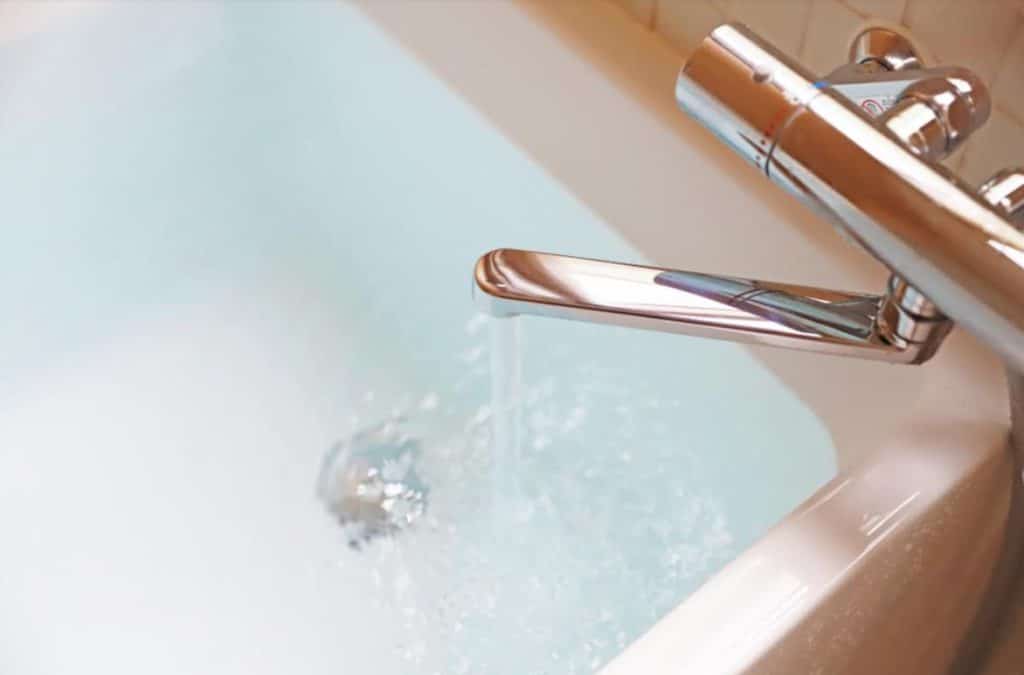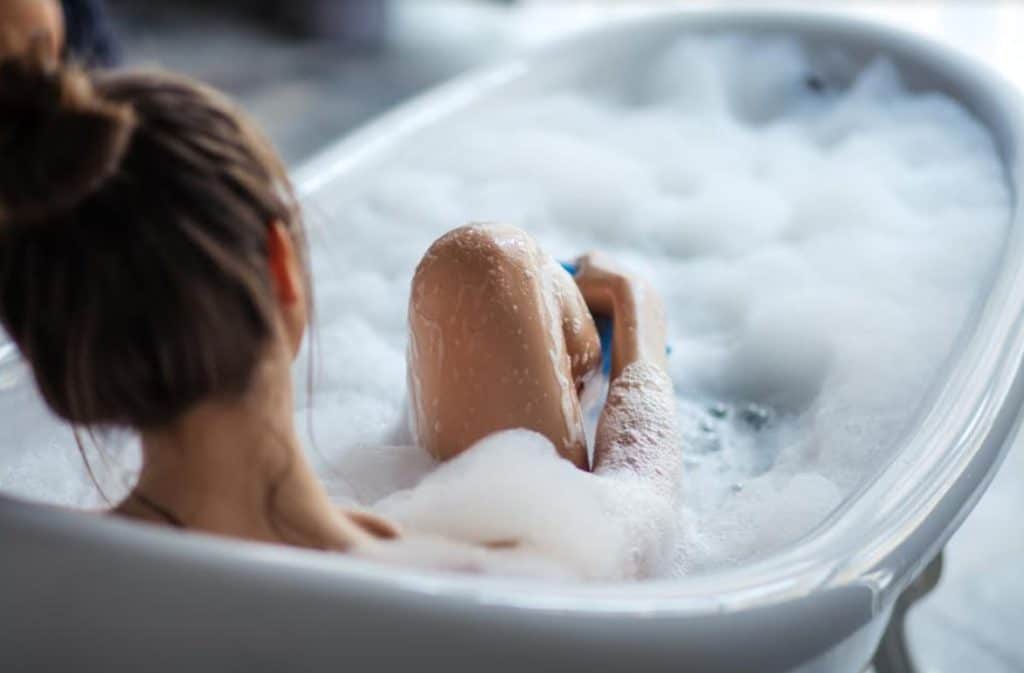As a new mother, one of the things you might have wondered about is when you can have a bath after giving birth. Having a bath is a form of self-care for many women so it is natural to be concerned about this. Your healthcare provider will most likely give you a lot of instructions concerning post-partum care, including the best hygiene practices for you and your bundle of joy. Also, well-meaning family and friends will offer different advice which may or may not be true. It can all be overwhelming for you as a new mother or mother-to-be.
This post is a general guide to knowing and understanding when you can take a bath after giving birth to a baby. Let’s get right into it!

When Can You Have a Bath After Delivery?
Typically, the ideal time to take a bath after giving birth depends on the type of delivery; vaginal birth or C-section. If your baby was delivered through vaginal delivery without any complications, you should be able to take a bath the same day or within a few days after delivery. However, it is important to check with your healthcare provider first to be on the safe side. On the other hand, if your child was delivered through C-section, it may take a longer time before it’s safe for you to have a bath.
On a general note, regardless of the type of delivery you had, it is usually advised that you stick to showers instead of soaking in a bathtub for the first few weeks after delivery. This is because there’s a theory that tub water can travel into your uterus and introduce bacteria which can cause an infection.
Having a Bath After Vaginal Delivery
If you had a vaginal delivery with little to no complications, you’ll be able to walk around normally a few hours after your delivery. This means that having a bath will be easier and you can be refreshed in no time. Take note of the following guidelines when you’re having your first post-partum birth:
- Make sure you’re strong enough to take a shower before taking one.
- If you have an episiotomy wound, you should wait at least 24 hours before having a bath.
- Wait for a few weeks before you consider soaking in a bathtub.
- When soaking in a bathtub, use plain and clean water for soaking.
- Make sure you gently pat your vaginal area dry after taking a shower or bathing.

Having a Bath After C-section
A C-section is completely different from a vaginal delivery. In most cases, your healthcare provider will give you strict instructions on when it’s safe for you to have a bath or take a shower. Usually, a doctor will only permit you to take a bath after your incisions have properly healed. If your doctor has given you the go-ahead to have a bath, here are some guidelines to ensure that you are doing it the right way:
- If you’re in the shower, it’s usually enough to just let the water run on your wound.
- If stitches, glue, or staples were used to close your wounds, you can take a shower. This is subject to confirmation from your healthcare provider.
- Avoid rubbing or scrubbing your wounds.
- Use lukewarm water. You should avoid water that’s too hot or too cold.
- Gently pat the incision area to ensure that it’s dry after showering.
- You will most likely have to wait for a couple of weeks before you can soak in a bathtub.
- If you develop hemorrhoids, you may be advised to soak in warm water. Just make sure the water level is low enough to keep the wound dry.

What is a Sitz Bath?
Sometimes, your doctor will recommend a sitz bath if you’ve just had a baby. A post-partum sitz bath is a warm and shallow bath that helps to clean your perineal area after delivery. It is known to work wonders in relieving perineal or tailbone pain and promoting faster healing. One thing it does is increase the blood flow to the perineal area, thereby improving healing. During a sitz bath, a woman sits in a pool of warm water that only submerges her hips and bottom. When using a sitz bath, avoid adding any soap or bath salts to the water. Warm water only is enough to do the job. Sit in the tub for about 5 minutes, stand up, and pat dry the submerged areas with a clean towel.
Here are some other benefits that a sitz bath offers:
- It reduces itching.
- It reduces inflammation.
- It soothes soreness.
- It gently cleans the perineal area to prevent infections.
Make sure you consult your healthcare provider before using a sitz bath for post-partum bathing.
Conclusion
Post-partum recovery needs to be taken seriously to ensure the best quality of life for both the new mother and her baby. Personal hygiene is an important part of post-partum recovery. However, you need to be cautious about your personal hygiene practices, and make sure everything you’re doing is safe. If you have doubts about when to take a shower or soak in the bathtub, don’t hesitate to reach out to your healthcare provider for professional advice. Taking a birth after delivery usually depends on the type of delivery you had. Overall, your doctor will discuss the safest ways for you to have your bath after delivery.

